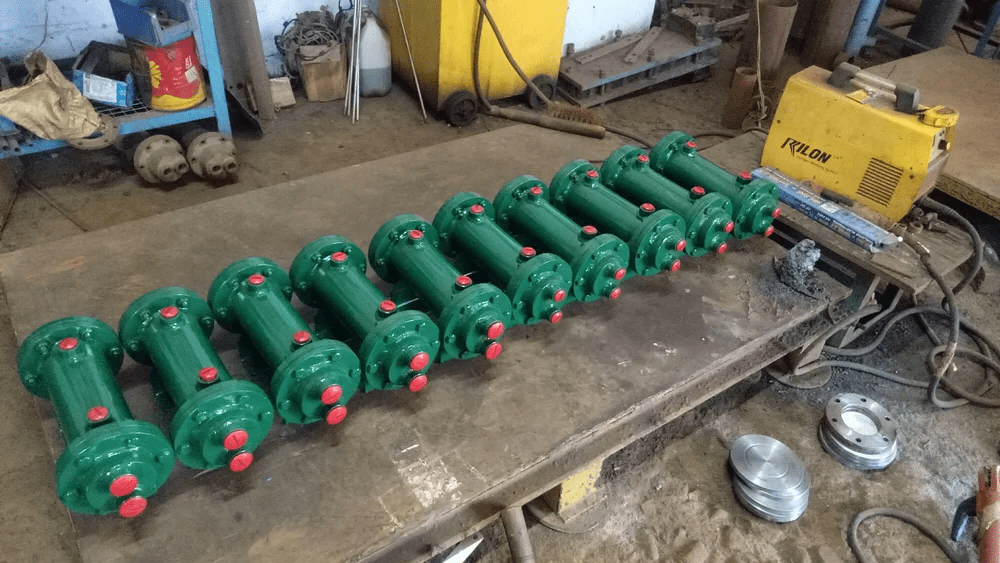What is a Steam Condenser?
A steam condenser is a closed vessel heat exchanger that converts exhaust steam from turbines or engines back into water (condensate) by removing latent heat, creating a vacuum that improves system efficiency. These are critical in:
- Power plants (Rankine cycle)
- Marine propulsion
- Industrial process heating
- Refrigeration systems
Core Functions
- Vacuum Creation – Increases enthalpy drop across turbines (boosts efficiency by 25-35%)
- Heat Recovery – Transfers waste heat to cooling water
- Condensate Recycling – Returns purified water to boilers
- Non-Condensable Gas Removal – Ejects air/CO₂ to maintain vacuum
Types of Steam Condensers
1. Surface Condensers (Shell & Tube)
- Design:
- Steam flows outside tubes
- Cooling water circulates inside tubes
- Advantages:
- High vacuum (0.09-0.1 bar abs)
- Condensate purity
- Applications:
- Large power plants (500+ MW)
- Petrochemical industries
2. Jet Condensers (Direct Contact)
- Design:
- Steam mixes directly with cooling water spray
- Advantages:
- Compact, low-cost
- Disadvantages:
- Condensate contamination
- Applications:
- Small industrial units
- Emergency backup systems
3. Air-Cooled Condensers (ACC)
- Design:
- Finned tubes with forced air flow
- Advantages:
- Zero water consumption
- Disadvantages:
- Higher backpressure (0.12-0.25 bar)
- Applications:
- Water-scarce regions
- Solar thermal plants
4. Evaporative Condensers
- Hybrid Design:
- Combines water spray + air cooling
- Efficiency:
- Closer approach temperatures than ACCs
- Applications:
- HVAC systems
- Food processing
Key Performance Metrics
| Parameter | Typical Range |
| Vacuum Level | 0.09-0.25 bar (abs) |
| Cooling Water ΔT | 8-12°C |
| Condensate Temp | 32-45°C |
| Heat Rate | 2,000-10,000 kJ/kWh |
Design Considerations
- Tube Material
- Admiralty brass (clean water)
- Titanium (seawater)
- Stainless steel (high purity)
- Tube Configuration
- Single-pass vs. multi-pass
- Triangular vs. square pitch
- Air Removal System
- Steam jet ejectors
- Liquid ring vacuum pumps
- Fouling Factor
- 0.0001 m²K/W (treated water)
- 0.0004 m²K/W (seawater)
Maintenance Best Practices
- Daily: Log vacuum levels
- Weekly: Test water chemistry
- Monthly: Clean tube bundles
- Annually: Replace damaged tubes
Critical Alarm Points:
Efficiency Optimization
- Variable Speed Cooling Pumps – Match flow to load
- Hybrid Cooling – ACC + wet cooling synergy
- Nanocoated Tubes – Reduce fouling
Condenser Selection Guide
For power plants: Surface condensers (high vacuum)
For industries: Jet condensers (low cost)
For dry regions: Air-cooled condensers (water savings)
Need sizing help? Provide:
- Steam flow rate (kg/h)
- Exhaust pressure (bar)
- Cooling medium available
